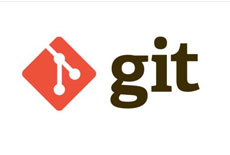JavaScript实现Base64加密解密。Base64与其说是加密算法不如说是方便数据传输而生的数据转换手段。
测试代码:
<!DOCTYPE html>
<html>
<head>
<title>test</title>
<meta charset="utf-8">
<script type="text/javascript" src="js/base64.js"></script>
<style>
.resource_enc, .resource_dec{
width: 500px;
}
.p1, .p2{
min-height: 100px;
background-color: #dcffe1;
}
</style>
</head>
<body>
<input type="text" class="resource_enc"><input type="button" onclick="encoding()" value="编码"><br/>
<p class="p1"></p>
<input type="text" class="resource_dec"><input type="button" onclick="decoding()" value="解码"><br/>
<p class="p2"></p>
<script type="text/javascript">
var base = new Base64();
function encoding() {
var text = document.getElementsByClassName("resource_enc")[0].value;
document.getElementsByClassName("p1")[0].innerText = base.encode(text);
}
function decoding() {
var text = document.getElementsByClassName("resource_dec")[0].value;
document.getElementsByClassName("p2")[0].innerText = base.decode(text);
}
</script>
</body>
</html>Base64.js
function Base64() {
var _keyStr = "ABCDEFGHIJKLMNOPQRSTUVWXYZabcdefghijklmnopqrstuvwxyz0123456789+/=";
this.encode = function (input) {
var output = "";
var chr1, chr2, chr3, enc1, enc2, enc3, enc4;
var i = 0;
input = utf8Encode(input);
while (i < input.length) {
chr1 = input.charCodeAt(i++);
chr2 = input.charCodeAt(i++);
chr3 = input.charCodeAt(i++);
enc1 = chr1 >> 2;
enc2 = ((chr1 & 3) << 4) | (chr2 >> 4);
enc3 = ((chr2 & 15) << 2) | (chr3 >> 6);
enc4 = chr3 & 63;
if (isNaN(chr2)) {
enc3 = enc4 = 64;
} else if (isNaN(chr3)) {
enc4 = 64;
}
output = output +
_keyStr.charAt(enc1) + _keyStr.charAt(enc2) +
_keyStr.charAt(enc3) + _keyStr.charAt(enc4);
}
return output;
};
this.decode = function (input) {
var output = "";
var chr1, chr2, chr3;
var enc1, enc2, enc3, enc4;
var i = 0;
input = input.replace(/[^A-Za-z0-9\+\/\=]/g, "");
while (i < input.length) {
enc1 = _keyStr.indexOf(input.charAt(i++));
enc2 = _keyStr.indexOf(input.charAt(i++));
enc3 = _keyStr.indexOf(input.charAt(i++));
enc4 = _keyStr.indexOf(input.charAt(i++));
chr1 = (enc1 << 2) | (enc2 >> 4);
chr2 = ((enc2 & 15) << 4) | (enc3 >> 2);
chr3 = ((enc3 & 3) << 6) | enc4;
output = output + String.fromCharCode(chr1);
if (enc3 !== 64) {
output = output + String.fromCharCode(chr2);
}
if (enc4 !== 64) {
output = output + String.fromCharCode(chr3);
}
}
output = utf8Decode(output);
return output;
};
utf8Encode = function (string) {
string = string.replace(/\r\n/g,"\n");
var utfText = "";
for (var n = 0; n < string.length; n++) {
var c = string.charCodeAt(n);
if (c < 128) {
utfText += String.fromCharCode(c);
} else if((c > 127) && (c < 2048)) {
utfText += String.fromCharCode((c >> 6) | 192);
utfText += String.fromCharCode((c & 63) | 128);
} else {
utfText += String.fromCharCode((c >> 12) | 224);
utfText += String.fromCharCode(((c >> 6) & 63) | 128);
utfText += String.fromCharCode((c & 63) | 128);
}
}
return utfText;
};
utf8Decode = function (utfText) {
var string = "";
var i = 0;
var c = 0;
var c1 = 0;
var c2 = 0;
while ( i < utfText.length ) {
c = utfText.charCodeAt(i);
if (c < 128) {
string += String.fromCharCode(c);
i++;
} else if((c > 191) && (c < 224)) {
c1 = utfText.charCodeAt(i+1);
string += String.fromCharCode(((c & 31) << 6) | (c1 & 63));
i += 2;
} else {
c1 = utfText.charCodeAt(i+1);
c2 = utfText.charCodeAt(i+2);
string += String.fromCharCode(((c & 15) << 12) | ((c1 & 63) << 6) | (c2 & 63));
i += 3;
}
}
return string;
}
}

















 关于简忆
关于简忆 简忆诞生的故事
简忆诞生的故事



 粤ICP备16092285号
粤ICP备16092285号
文章评论(0)